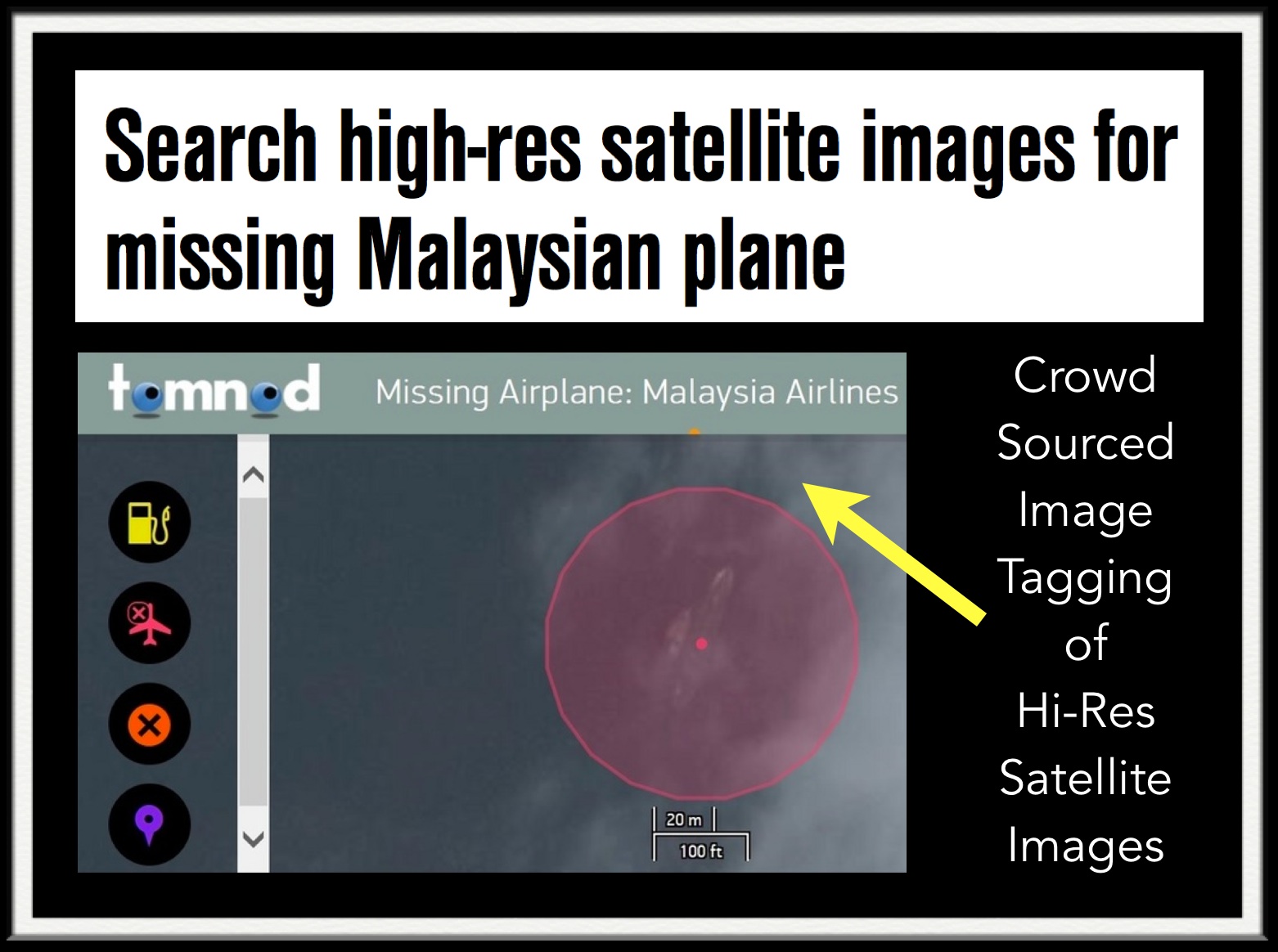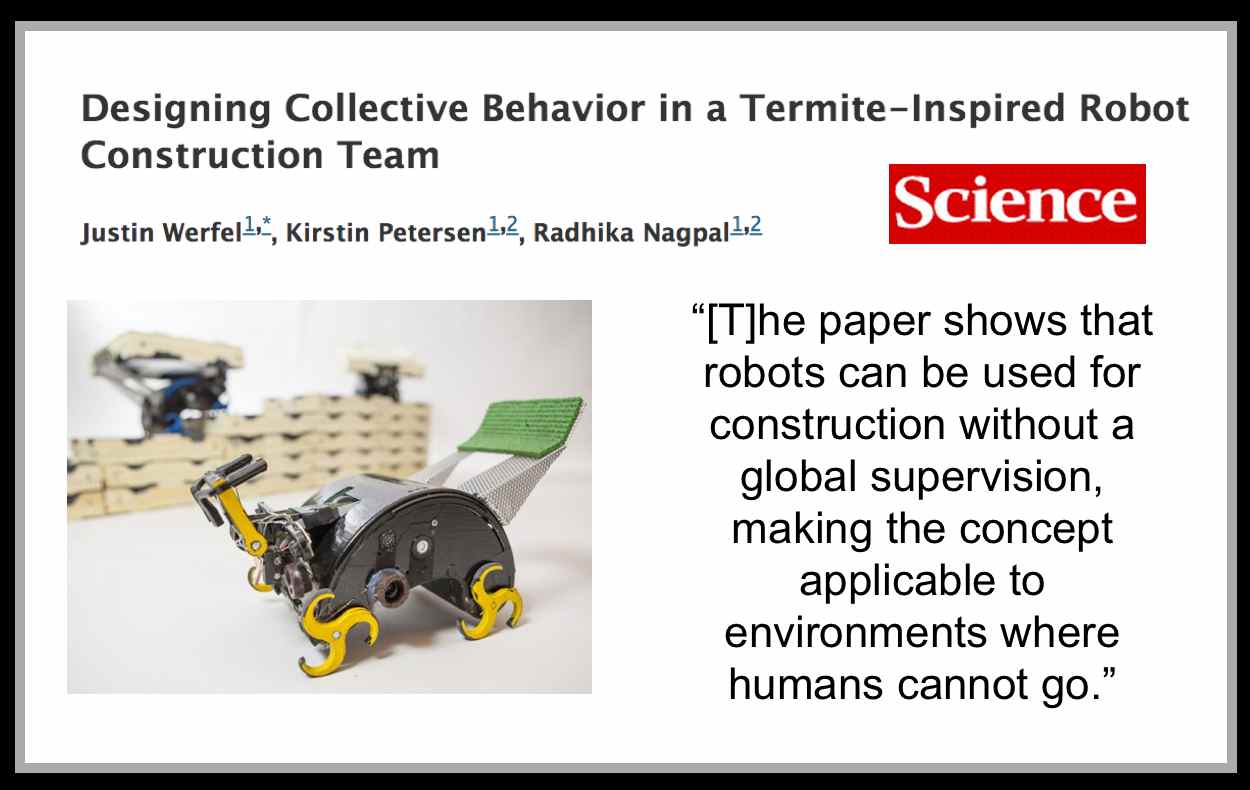Tag: Uncategorized
The Forum on Legal Evolution – NYC 02.26.13

Last week Bill Henderson, Bruce MacEwen and Daniel Martin Katz convened the first Forum on Legal Evolution – a small invitation only forum – for leaders from across the legal supply chain (General Counsels, Law Firms, Legal Technologists, Legal Media, Legal Educators, etc.). It was a good mix of members of the AM 200, GC’s of large companies, strategically important technology providers, etc. The primary focus of this first forum was three-fold: (1) change management and the diffusion of innovation, (2) process engineering and process improvement and (3) big data, legal analytics and machine learning in law practice (katz+bommartio slides are available here).
Aric Press from The American Lawyer offers a short write up of the event here.
Brian Dalton from Above the Law offers his perspective here.
Gartner Legal IT Scenario, 2020 – Smart Machines and LPO Radically Disrupt Legal Profession (via Gartner IT)
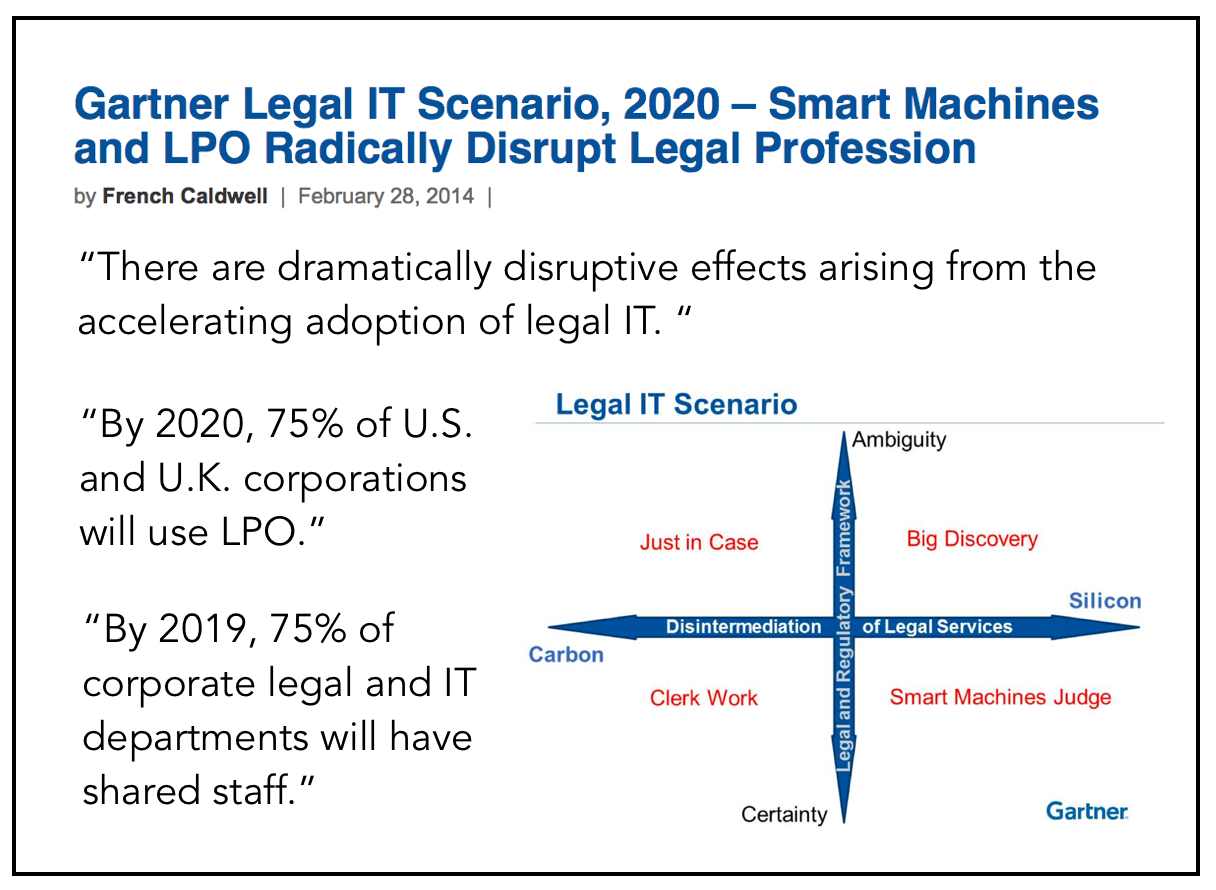 The report offers a number of predictions including those quoted above and “by 2018, legal IT courses will be required for the graduates of at least 20 U.S. Tier 1 and Tier 2 law schools.”
The report offers a number of predictions including those quoted above and “by 2018, legal IT courses will be required for the graduates of at least 20 U.S. Tier 1 and Tier 2 law schools.”
While that would be sensible idea given the emerging opportunities in the legal market, I doubt that this will happen by 2018. Indeed, I would predict that somewhere between {0-2} law schools will make such the move of making such content mandatory by 2018. The ability to teach such a course is almost never a recognized hiring priority or hiring qualification that institutions are seeking (see here here here, etc.). Instead, law schools and faculty hiring committees typically focus on hiring for existing or perceived institutional needs. Even when institutions focus on the so called “best athlete” model of hiring … legal technology, etc. typically does not constitute a relevant dimension of the question. In other words, as I said in my MIT School of Law slide deck (and paper) the best athlete model depends upon what sport we are playing.
I am proud to be one of the few tenure track faculty members who actually teaches such courses inside a law school environment (legal technology / legal information engineering, quantitative methods, e-discovery, entrepruenerial lawyering, legal analytics, etc.) Among the existing institutions, there are strong and weaker version of the above courses. However, minus a few notable exceptions, most institutions do not have faculty members with the technical chops that are necessary to effectively teach such course(s).
The intersection of law+technology is one of the growth sectors within legal and as such it is a very exciting time to work in this area. Arbitrage opportunities are temporal in nature and given the highly competitive environment among law schools, it does not bother me if other law schools do not make this a priority. It allows those of us who are so inclined to build relationships with the leading folks in this emerging industry sub-sector before it lands on the radar of others.
Hilary Mason – Machine Learning for Hackers
Hilary Mason – Machine Learning for Hackers from BACON: things developers love on Vimeo.
HT: Noah Waisberg (Diligence Engine Blog)
Rank and Filed – SEC Filings for Humans
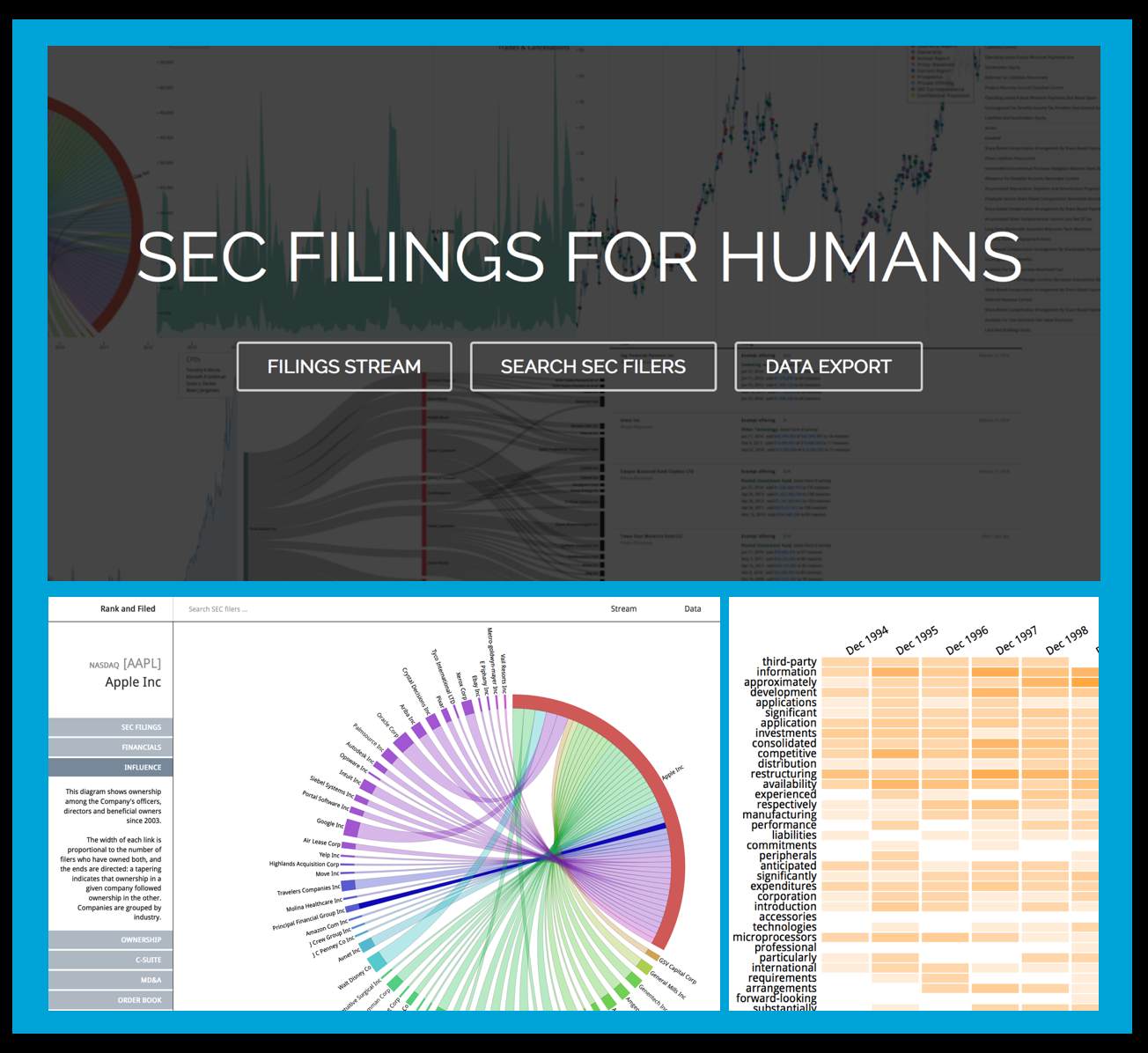 Really Impressive Work! – Read More Here. (HT to Ted Sichelman)
Really Impressive Work! – Read More Here. (HT to Ted Sichelman)
Legal Analytics – Introduction to the Course – Professors Daniel Martin Katz + Michael J Bommarito
Here is an introductory slide deck from “Legal Analytics” which is a course that Mike Bommarito and I are teaching this semester. Relevant legal applications include predictive coding in e-discovery (i.e. classification), early case assessment and overall case prediction, pricing and staff forecasting, prediction of judicial behavior, etc.
As I have written in my recent article in Emory Law Journal – we are moving into an era of data driven law practice. This course is a direct response to demands from relevant industry stakeholders. For a large number of prediction tasks … humans + machines > humans or machines working alone.
We believe this is the first ever Machine Learning Course offered to law students and it our goal to help develop the first wave of human capital trained to thrive as this this new data driven era takes hold. Richard Susskind likes to highlight this famous quote from Wayne Gretzky … “A good hockey player plays where the puck is. A great hockey player plays where the puck is going to be.”
Designing Collective Behavior in a Termite-Inspired Robot Construction Team (via Science)
This is a pretty important breakthrough for biologically inspired computing. During my doctoral studies at Michigan, I was a NSF-IGERT fellow at the University of Michigan Center for the Study of Complex Systems. I had the great pleasure of spending time lots of time with John Holland whose work on genetic algorithms is one of many efforts to implement biological principles into computing.
Anyway, for those who are geeky like me – you should read the underlying article in this week’s issue of Science and/or the popular press version here.
Legal Tech Startups – $458 Million in Legal Services R&D (via TR Legal Executive Insights)
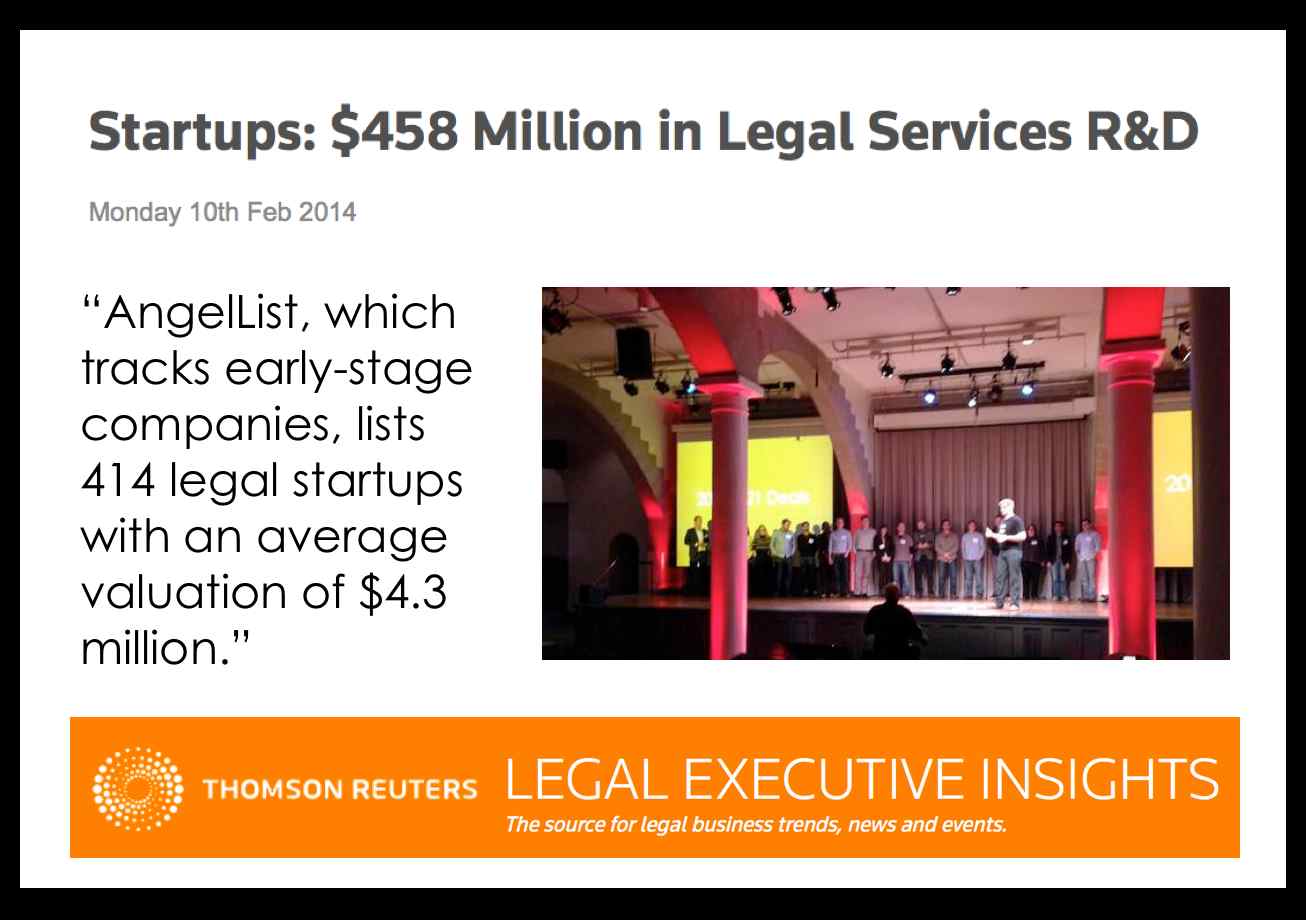 Take a look at this list of legal startups on Angel List – 414 and counting. I am happy to count many of these companies as #ReInventLaw Speakers / Attendees. While many of these companies may not succeed in the long run – these companies tend to cluster around certain ideas. It is my belief that many of those ideas will ultimately prevail. For more thoughts check out Bob Ambrogi’s post “A Time of Unprecedented Innovation in Legal Technology.” I agree with most of his thoughts on the matter.
Take a look at this list of legal startups on Angel List – 414 and counting. I am happy to count many of these companies as #ReInventLaw Speakers / Attendees. While many of these companies may not succeed in the long run – these companies tend to cluster around certain ideas. It is my belief that many of those ideas will ultimately prevail. For more thoughts check out Bob Ambrogi’s post “A Time of Unprecedented Innovation in Legal Technology.” I agree with most of his thoughts on the matter.
Quantum Computing: A Primer (via Time)
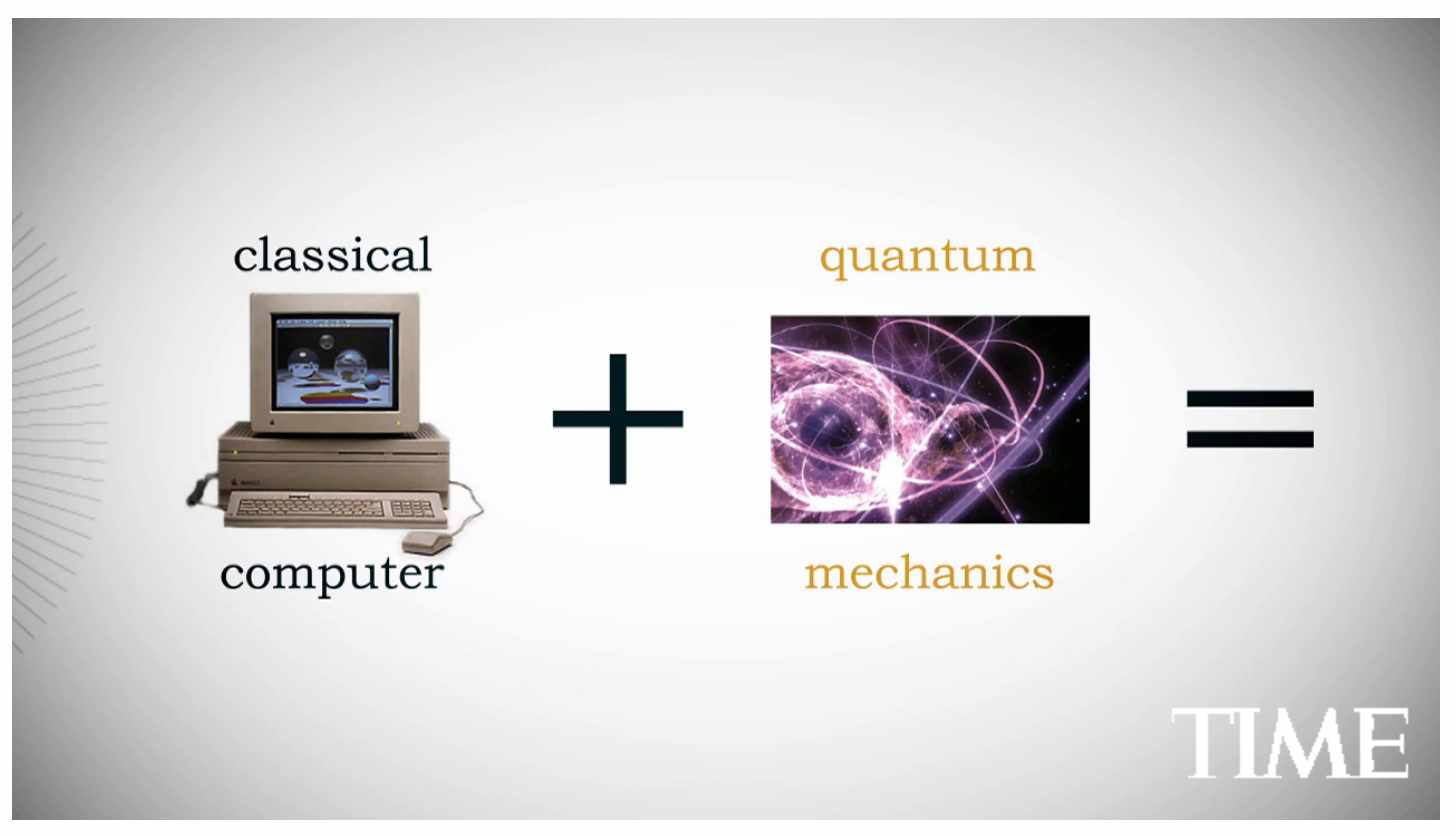 Click through on the image above to access video. I think this is among the more approachable discussions of the topic. For more check out this bonus video and the full article here.
Click through on the image above to access video. I think this is among the more approachable discussions of the topic. For more check out this bonus video and the full article here.
Over 800 Folks in Attendance at Cooper Union for ReInventLaw NYC 2014 – Thanks So Much For Coming!
It is a wrap for #ReInventLaw NYC 2014. We finished up with just over 800 folks in attendance for this free, public facing event at the Cooper Union (~725 at the peak of the day according to the security guards who were keeping the count). As the conference co-organizer, I want to thank all of our speakers for speaking, all of our sponsors for sponsoring and all of our attendees for attending!
There are many interesting changes underway within the legal industry. Many of the participants (both speakers and attendees) are part of the innovator / early adopter segment. It was great to connect with everyone. I hope to continue the conversation. More importantly, I look forward to working together to help build the future …

